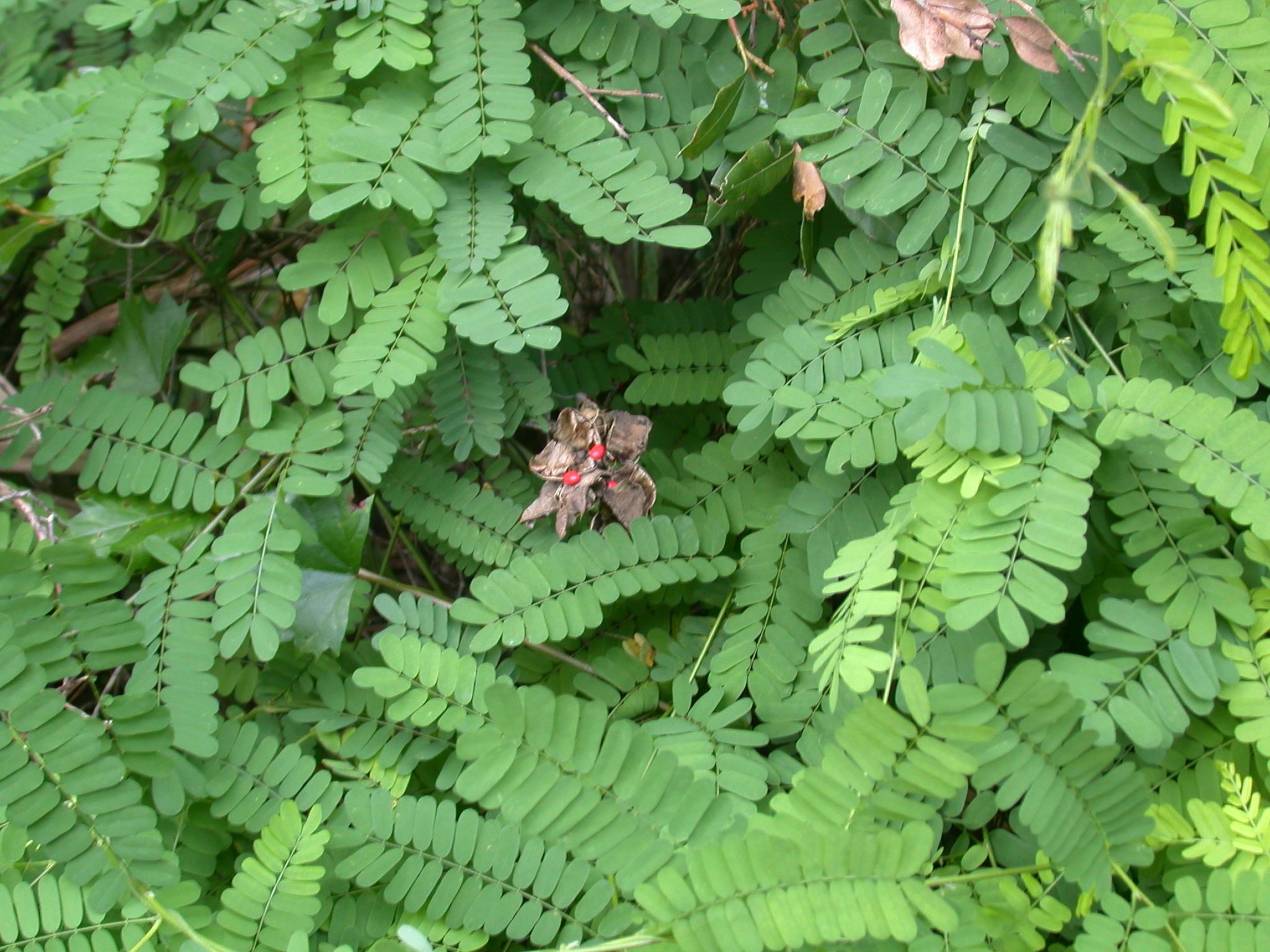Common Name: rosary pea
Family: Fabaceae
Common Synonyms: Abrus abrus
USDA Hardiness Zone: 11
Growth Habit: Vine
Origin: India
FISC Category: 1
FDACS Listed Noxious Weed: Yes
Introduction Date: pre-1932
IFAS Assessment:


High-climbing, perennial, woody vine with slender herbaceous branches. Alternate, stalked leaves, 5-13 cm long, even-pinnately compound with 5-15 pairs of oblong leaflets, to 1.8 cm long with entire margins. Small pea-shaped flowers, white, pink or reddish, in clusters at leaf axils. Flowers in summer. Fruit a short, oblong pod, with 3-8 shiny hard seeds, 6-7 mm long, red with black bases. Seeds extremely poisonous to livestock and humans.
Able to colonize a wide variety of habitats - xeric hammock, coastal uplands, flatwoods, hydric hammock, disturbed sites
Established in central and south Florida. Difficult to eradicate and increases following fire. Seeds dispersed by birds.

Note: Remove seed pods if possible. Site must be revisited several times to pull seedlings. Fall applications most effective.
IFAS, Center for Aquatic and Invasive Plants. 2013. Rosary Pea. http://plants.ifas.ufl.edu/node/23#more. Accessed on December 2, 2013.
Langeland, K.A., J.A. Ferrell, B. Sellers, G.E. MacDonald, and R.K. Stocker. 2011. Integrated management of non-native plants in natural areas of Florida. EDIS publication SP 242. University of Florida, Gainesville, Florida.
Langeland, K.A., H.M. Cherry, C.M. McCormick, K.C. Burks. 2008. Identification and Biology of Non-Native Plants in Florida's Natural Areas-Second Edition. IFAS Publication SP 257. University of Florida, Gainesville.